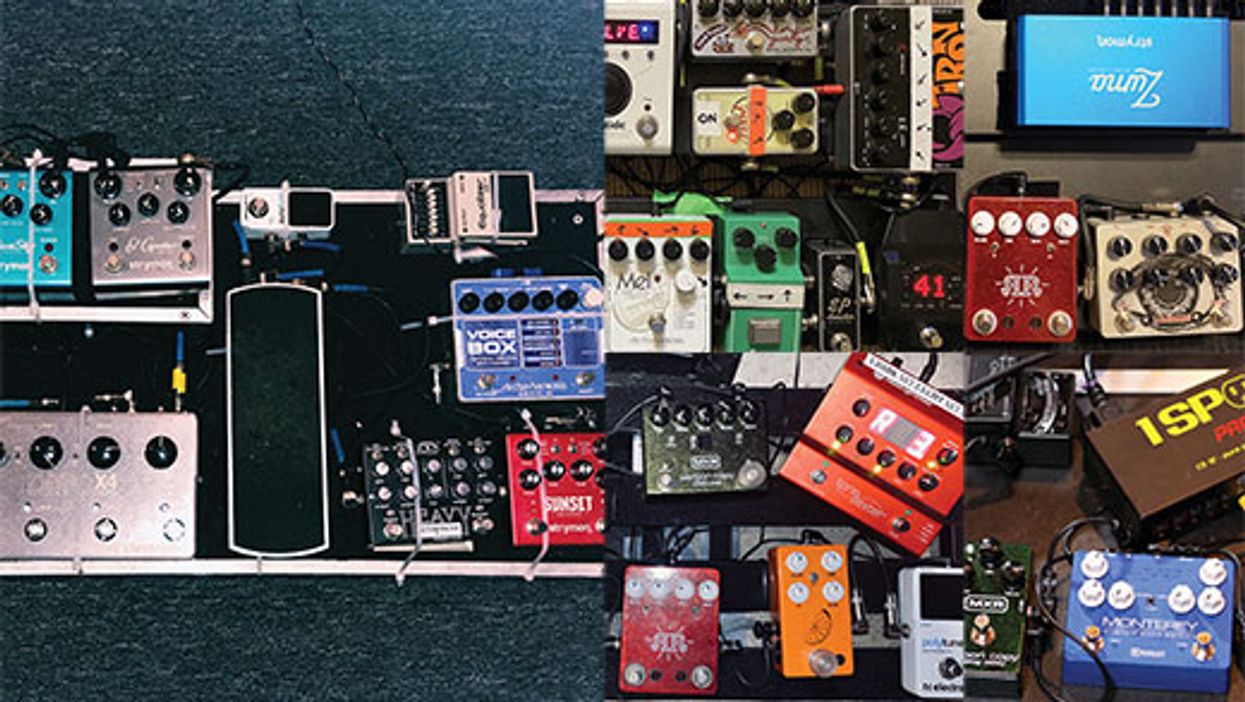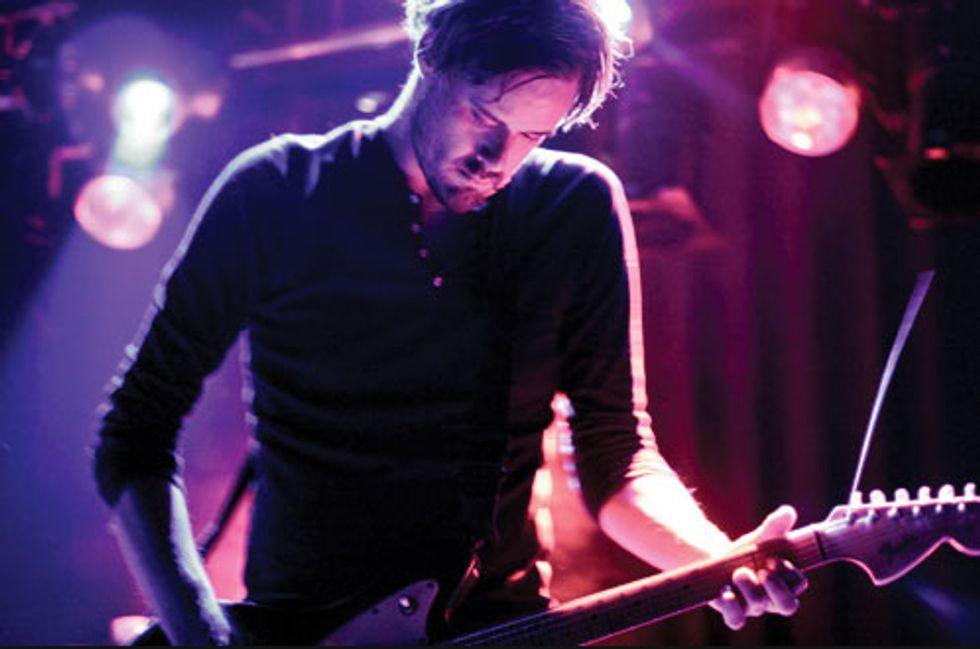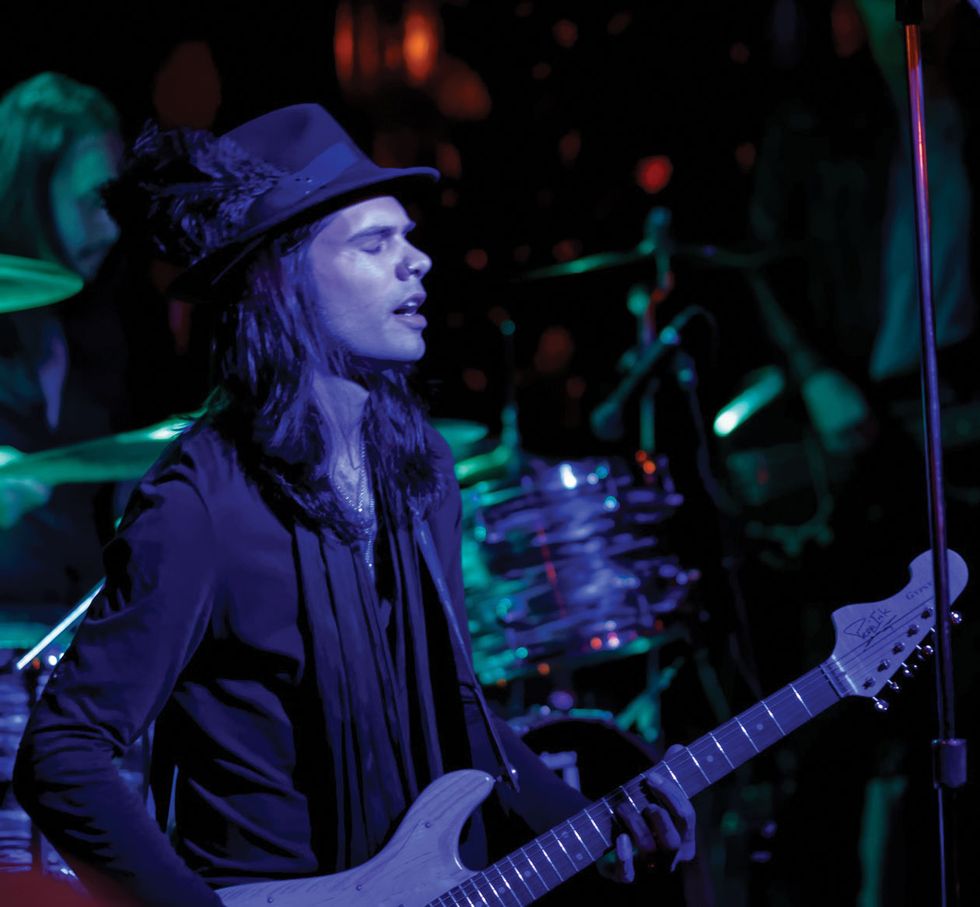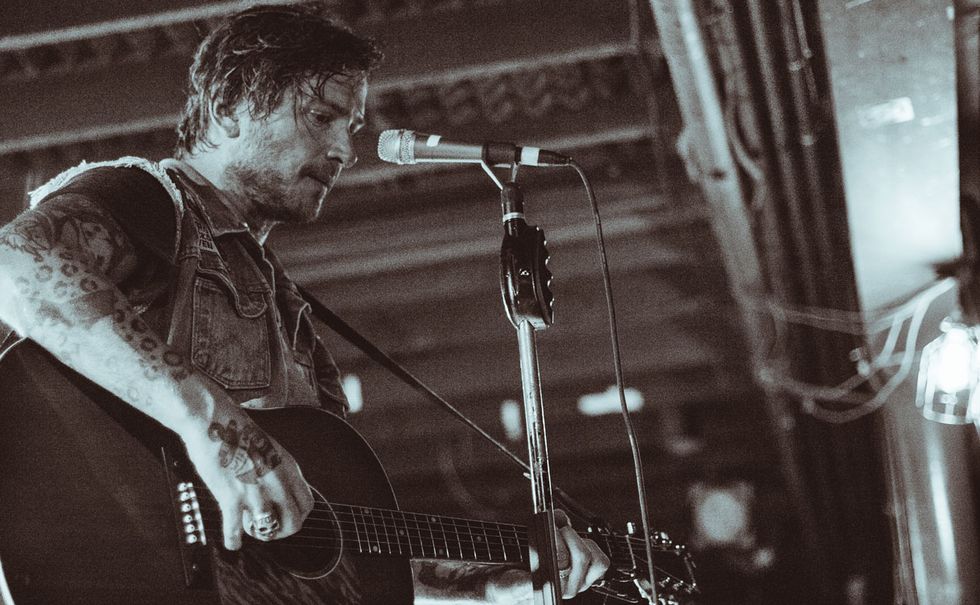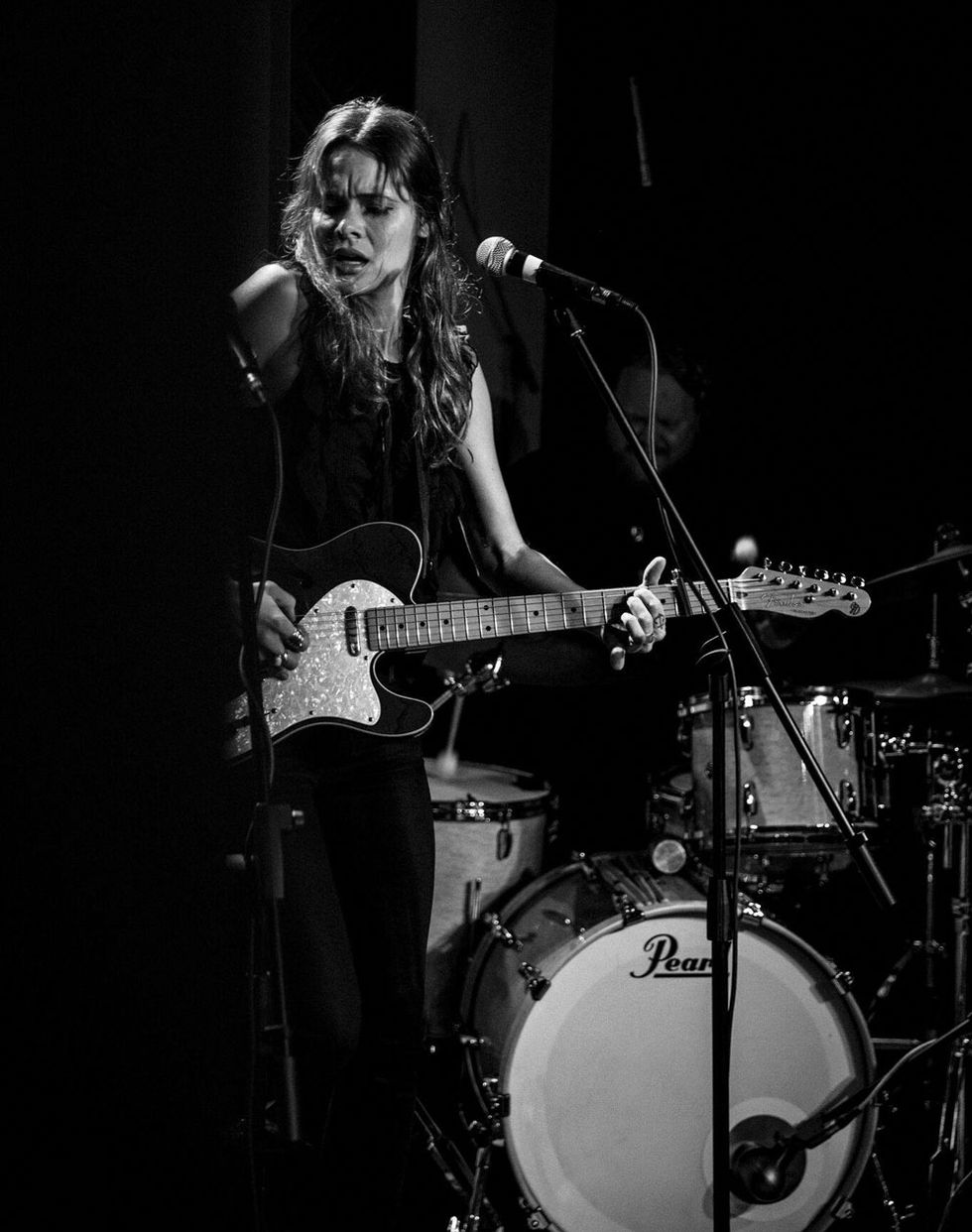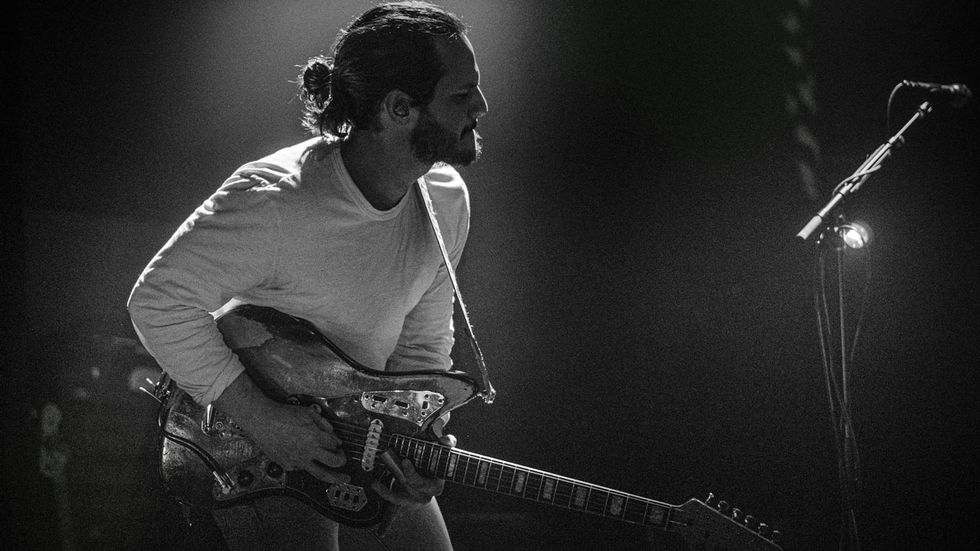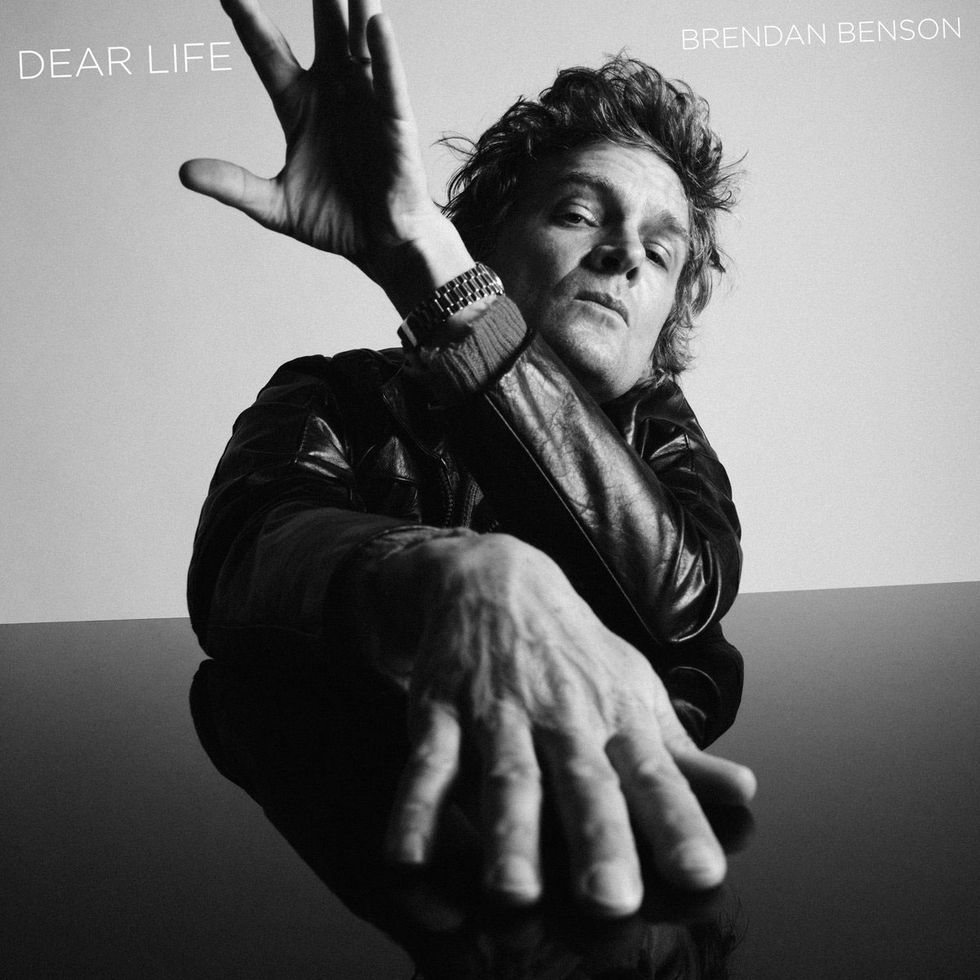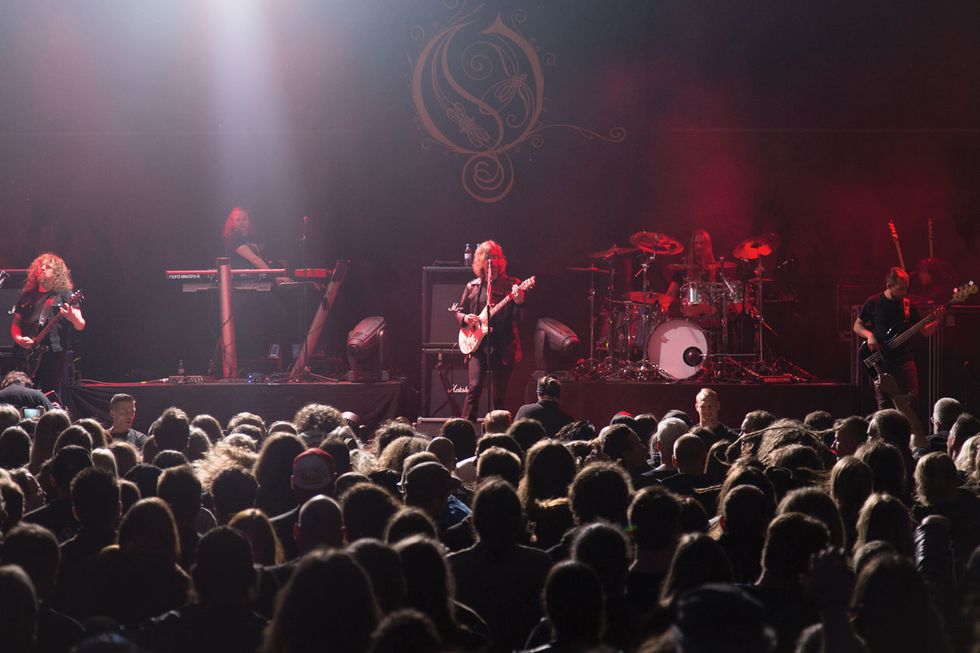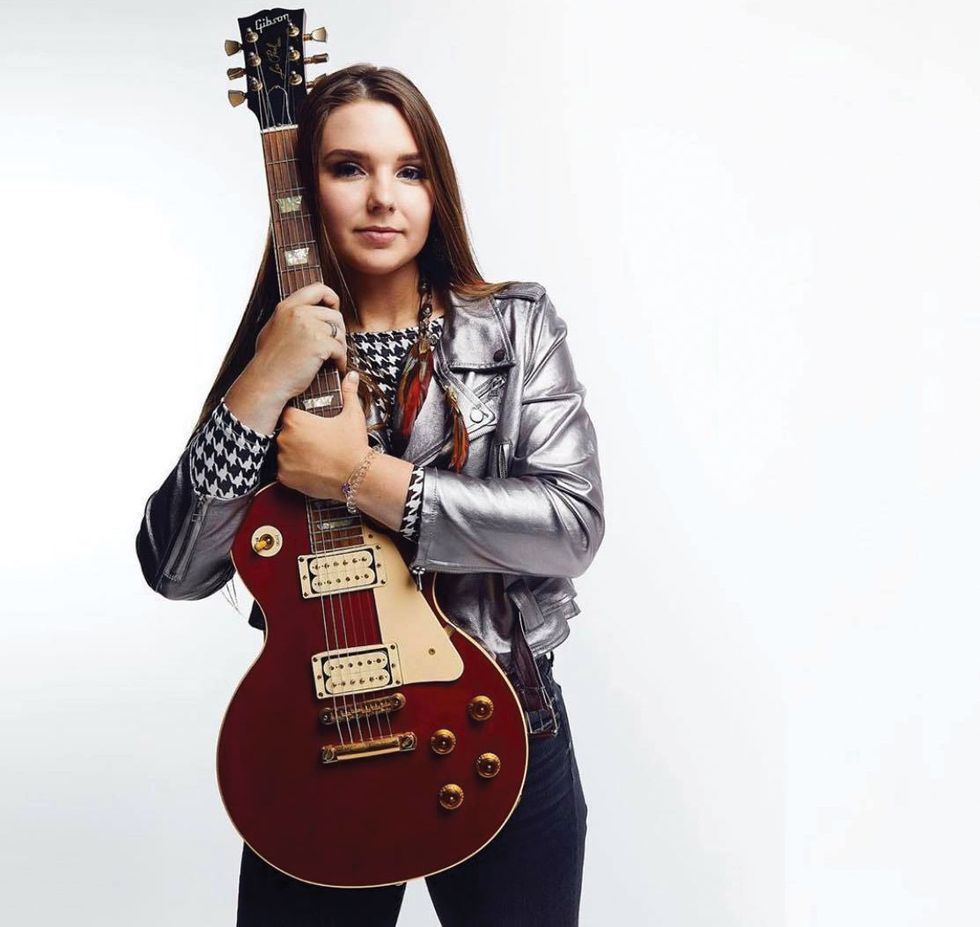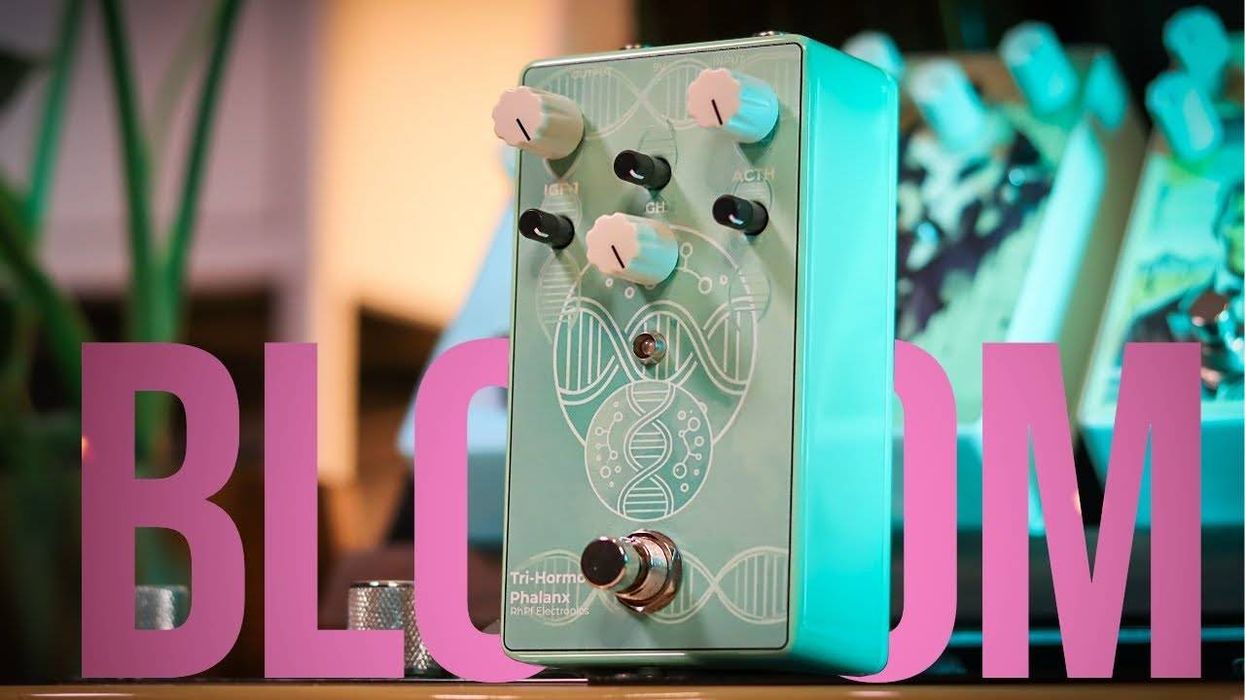
Caspian's Phil Jamieson
Post-rock instrumentalist Phil Jamieson’s most recent live board features four main food groups—dirts, loopers, delays, and reverbs—plus Electro-Harmonix Voice Box and MEL9 pedals for a snack. A Boss GE-7 graphic EQ—used for a clean boost with low-mid punch—is always on, while a Strymon Sunset and an Empress Heavy provide three layers of beef.
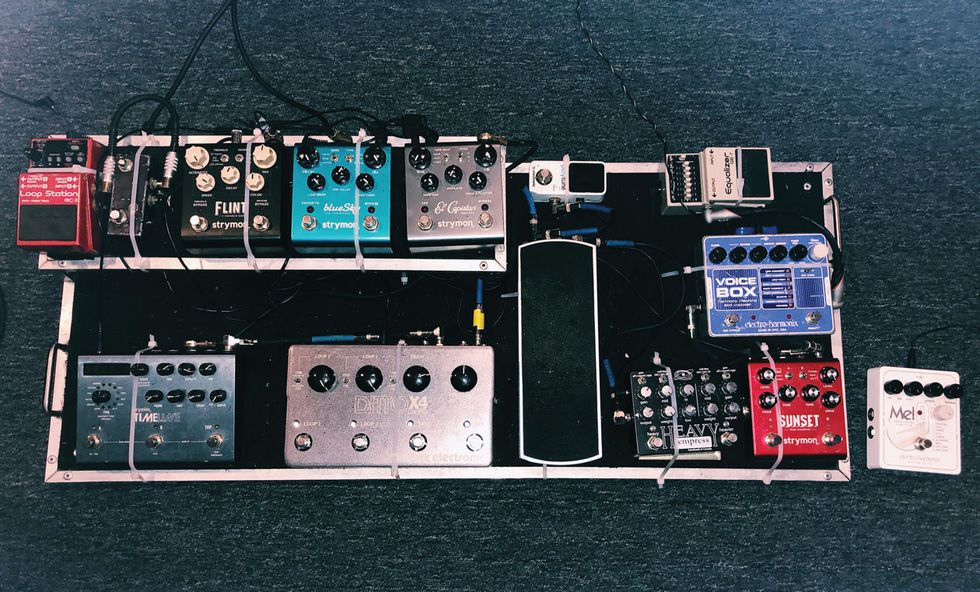
Next is an Ernie Ball VP Jr. volume pedal, then a TC Electronic Ditto X4, which Jamieson favors for its hold and tape-stop modes. Four more Strymons follow—a TimeLine, an El Capistan (“The pedal I can’t live without”), a blueSky Reverberator, and a Flint. At the end of the signal chain are a Boss RC-3 Loop Station loaded with samples for use as interludes, a mini black box for dramatic signal cuts, and a TC Electronic PolyTune Mini.

Nick Perri — Photo by Justin Higuchi
The Underground Thieves frontman (and former hired gun with Shinedown and Perry Farrell) has a fairly modest and old-school board.
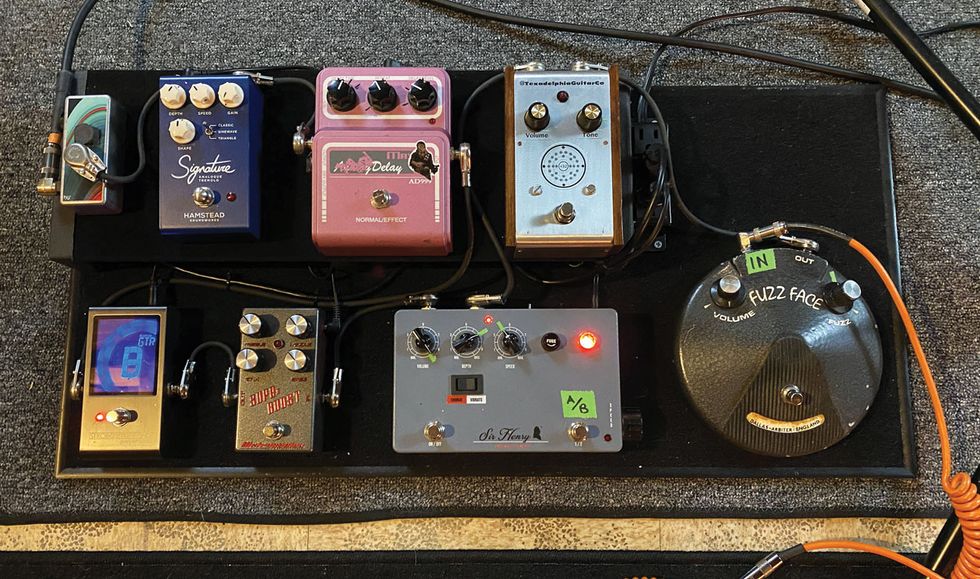
His guitar signal first hits a vintage Dallas-Arbiter Fuzz Face, then proceeds to a Texadelphia Germanium Booster, a Sir Henry Uni-Vibe clone, a Metropoulos Supa-Boost, a Peterson StroboStomp HD, a Maxon AD999 Analog Delay, and a Hamstead Soundworks Signature Analogue Tremolo.

Butch Walker — Photo by Abby Gillardi
Indie singer-songwriter/in-demand producer Butch Walker tours with a board outfitted with a TC Electronic PolyTune, a couple of JHS stomps—a Pulp ’n’ Peel and Walker’s signature Ruby Red 2-in-1 overdrive/fuzz/boost—a Way Huge Conspiracy Theory,
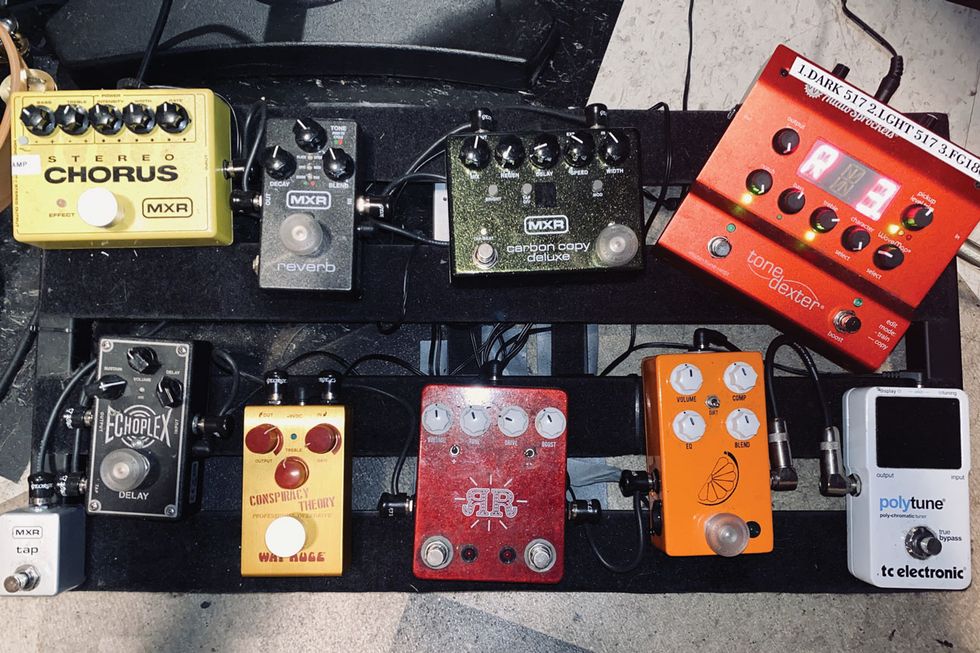
four MXRs—an Echoplex Delay (with an outboard tap-tempo footswitch), a Carbon Copy Deluxe, a Reverb, and a Stereo Chorus—and an Audio Sprockets ToneDexter acoustic DI/preamp. It’s all powered by an MXR Iso-Brick.

Suzanne Santo
Solo artist/multi-instrumentalist and former honeyhoney frontwoman Suzanne Santo uses a stomp station carefully procured to work not just with her guitars but also her banjo and violin.
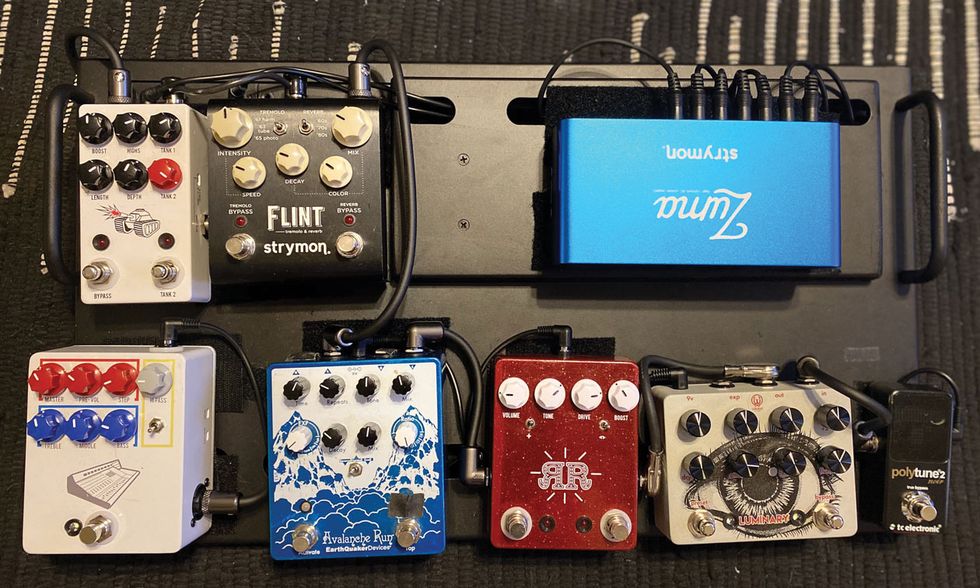
A Strymon Zuma powers a circuit whose first stop is a TC Electronic PolyTune 2 Noir Mini, followed by a Walrus Audio Luminary Quad Octave Generator, a JHS Ruby Red—often used to distort her fiddle—an EarthQuaker Devices Avalanche Run, a Strymon Flint (used for a choppy tremolo effect, or for its ’60s reverb sounds on slow-burn tunes), a JHS Spring Tank reverb, and a JHS Colour Box. When she needs to use her board with instruments other than her guitar, Santo adds an L.R. Baggs Venue DI and Whirlwind Selector (both not shown).

Mt. Joy's Sam Cooper — Photo by Matt Everitt
Mt. Joy 6-stringer Sam Cooper maximizes pedalboard real estate with neat, tight placement of a variety of utilities and effectors. His guitar signal arrives via a Shure GLXD16 wireless, and the one pedal that’s always on is an Electro-Harmonix Soul Food. For solos or standout riffs, Cooper kicks on an Xotic Effects EP Booster and/or an Ibanez TS9 Tube Screamer.
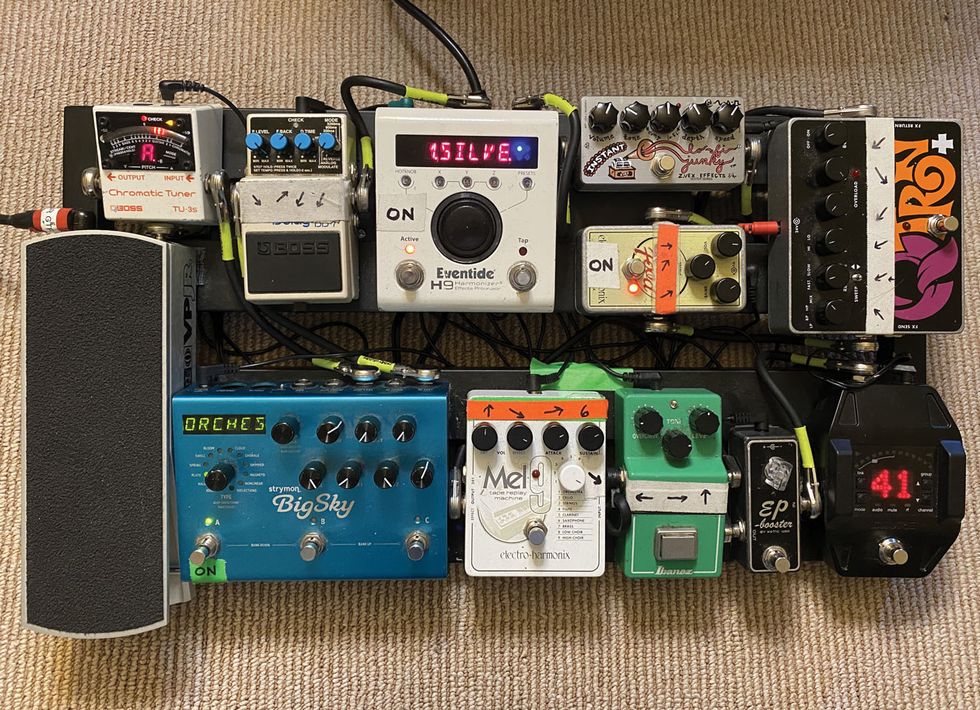
For unusual sounds, he calls on a Boss DD-7 Digital Delay’s reverse mode, a Strymon BigSky’s shimmery reverb, and an Eventide H9’s choppy tremolo. Auxiliary funkiness comes via Electro-Harmonix Q-Tron and MEL9 pedals (he loves the latter’s choir setting), as well as a ZVEX Lo-Fi Junky. Rounding out the collection are an Ernie Ball VP Jr. volume pedal and a footswitchless Boss TU-3S tuner.

Brendan Benson
For both his live performances alongside Jack White in the Raconteurs and much of his work as a studio producer, Brendan Benson has a lot of love for this select group of stomps mounted to a Helwig Designs board.
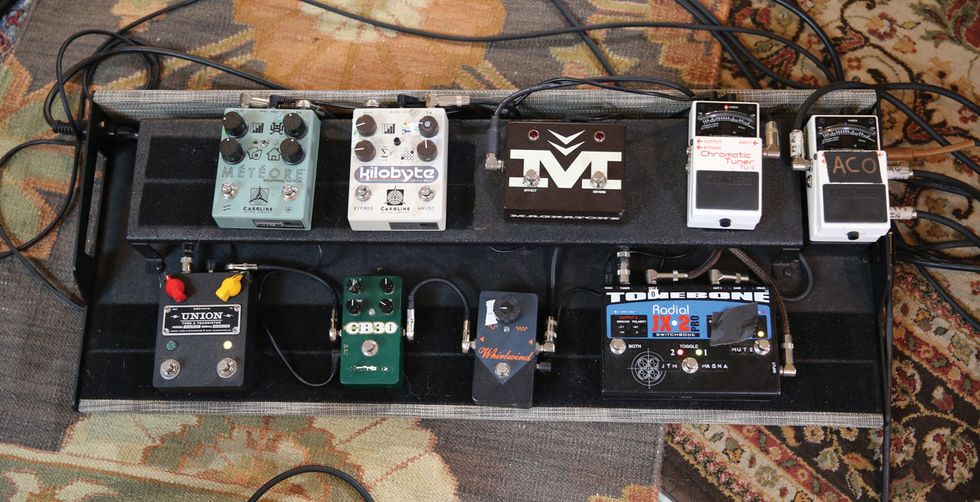
Two Boss TU-3 tuners (one for acoustic, one for electric) feed a Radial Tonebone JX-2 Pro amp switcher, a Whirlwind Rochester Series Orange Box Phase, a Catalinbread CB30 (a Vox-voiced overdrive), a Union Tube & Transistor NeverMORE boost, and two Caroline Guitar Company offerings—a Kilobyte Lo-Fi Delay and a Météore Millennial Edition Lo-Fi Reverb. Power comes via a Strymon Zuma.

Opeth’s Fredrik Åkesson & Mikael Åkerfeldt
The control center for Opeth lead guitarist Fredrik Åkesson’s pedalboard is a MusicomLab EFX-LE loop switcher. Among the stompboxes brought in and out of the signal path are a Strymon Volante, a TC Electronic Flashback 2, an Xotic Effects EP Booster, a One Control Tiger Lily Tremolo, an Olsson Amps Fuzztner octave-fuzz, an MXR Phase 95, a Boss OC-2 Octave, a DryBell Vibe Machine, and a Dunlop 95Q Cry Baby wah. A Dunlop DVP3 volume pedal avails hands-free dynamic shifts, a TC Electronic PolyTune 2 Mini helps keep guitars in tune, an ISP Technologies Decimator X keeps a thumb on noise, and a Decibel 11 Hot Stone provides power.
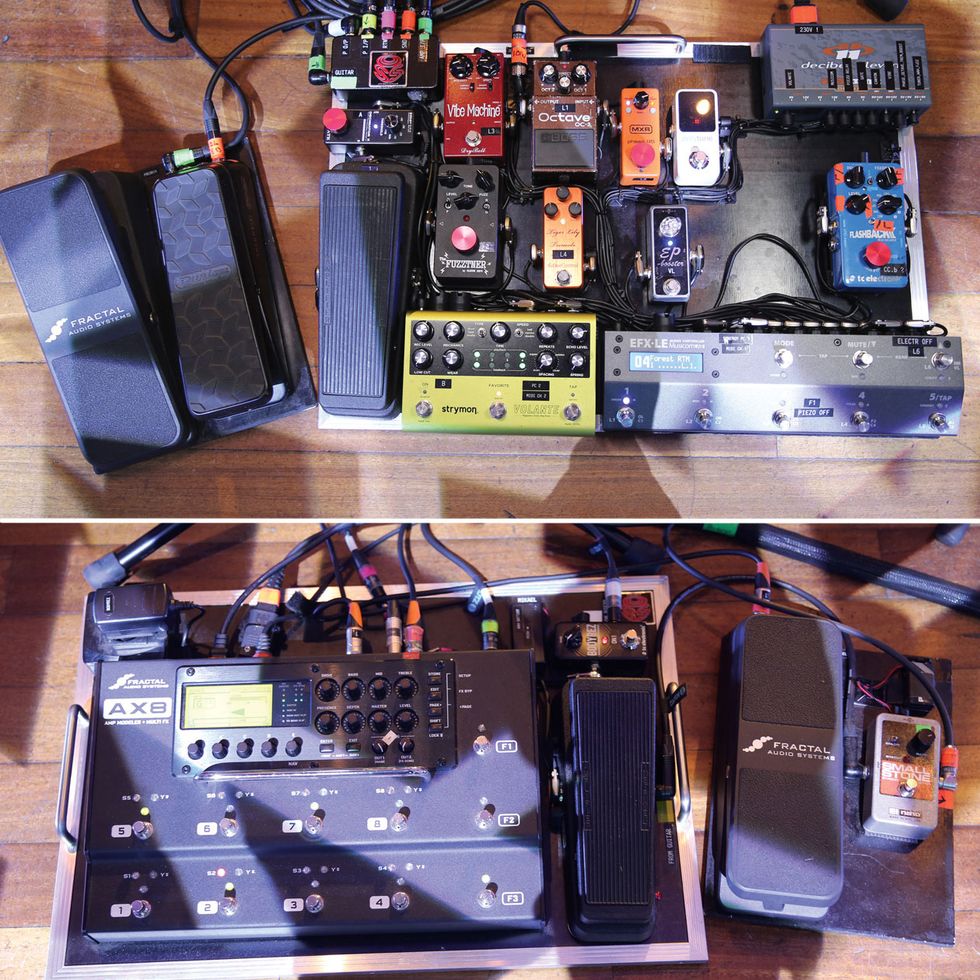
Opeth frontman Mikael Åkerfeldt, meanwhile, takes a much more streamlined approach to effects—at least in terms of the number of discrete boxes. His pedalboard consists of a Fractal Audio AX8 augmented by a Fractal expression controller, a Dunlop Cry Baby wah, an Electro-Harmonix Small Stone Nano phaser, and a TC Electronic BodyRez acoustic pickup enhancer.

Ally Venable
Texas blues blaster Ally Venable doesn’t need more than a handful of stomps for maximum onstage efficacy.
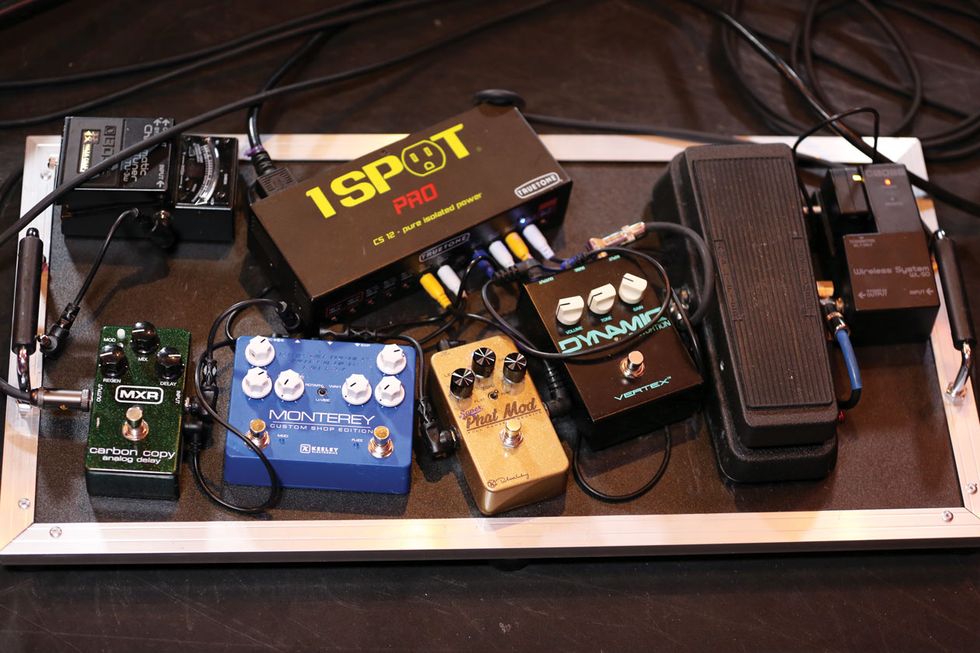
Her guitar signal hits the board coming out of a Boss WL-50 wireless, and immediately hits a Dunlop 535Q Cry Baby wah before moving on to a Vertex Dynamic Distortion, Keeley Super Phat Mod and Monterey pedals, and an MXR Carbon Copy delay. Power comes courtesy of a TrueTone CS 12 1 Spot Pro, and tuning is facilitated by a Boss TU-3W.
